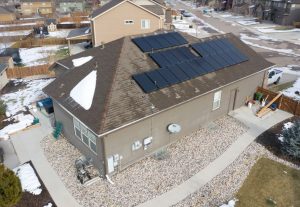America is undergoing a massive transition to renewable energy. 2020 was the hottest year on record. To combat global warming, the United States has a renewable energy goal to reach Net-Zero carbon emissions by 2050, and one of the best and most responsible actions a homeowner can take to help offset carbon emissions and reduce their carbon footprint is to install solar panels
January is the Perfect Month to Make the Switch to Solar.
Signing up for solar early in the year means that a homeowner’s clean energy system will be up and running by early springtime when the days get longer, providing abundant sunlight to capture and convert to power the home. No matter when one makes the switch, it only takes 6-8 weeks to convert the property to solar, forever. During this period, a site audit is conducted and a solar provider like ZenSolar designs a system tailored to the home. Required permitting is also accomplished, as well as, application of the new solar-fitted property to the local utility and/of HOA.
How a Solar Roof Works
- With a solar roof system, a home actually generates its own power
- During the day when homeowners are at work or away, energy is captured and stored
- While a family is at home, lights, A/C, and appliances draw energy produced by the solar panels
- As a roof captures solar energy, the resident’s “net-metered” utility dial runs backward!
- The utility company only bills for a home’s “net” energy usage
Why Now is the Time to Invest in Solar Panels
- The cost of solar panels is 10 times cheaper today than they were a decade ago
- The federal tax credit remains strong at 22% through 2021 and additional one-time rebates are handed out by some states
- Solar technology is advancing and systems are more durable and efficient than ever
- Modern solar panels integrate nicely into architectural designs and home’s powered with solar make a true fashion/lifestyle statement.
Millions of Homeowners Have Joined the Movement
The United States recently surpassed 2 million solar installations and the industry is on track to grow significantly through this decade. It’s important to note that not all homes qualify. A company like ZenSolar helps homeowners through the decision-making process. They estimate the costs and savings of solar for a specific property. They work with homeowners to choose and design a system that complements their home. Then they handle the proper installation of the system using experienced, licensed contractors who specialize in residential solar energy systems. Making the switch is not difficult and ZenSolar summarizes it in 4 steps.
An Investment in Solar Panels Earns a 26% Tax Credit
Growth in residential solar energy has surged in recent years thanks to the 2005 Energy Policy Act. Solar panels installed before December 31, 2023 qualify homeowners for a 26% tax credit. Depending on what state someone lives in, additional one-time tax credit from the state government can further reduce the initial investment for solar roofing.
When a home incorporates a solar energy system, it offsets the use of less sustainable energy sources, such as electricity, coal, and gas. It’s possible for homeowners to generate enough solar power to cover their utility bills every month. The average home in the U.S. can easily save over $1,400 each year by installing a solar roof system.
Solar panels enable particles of light to release electrons from atoms. That process produces energy. The energy produced by a home’s solar system feeds into the wider energy grid. Utility companies take what the homeowner produces and credits them back. Essentially, the utility company is buying energy from the homeowner!
Ready to see a customized solar design for your home?



